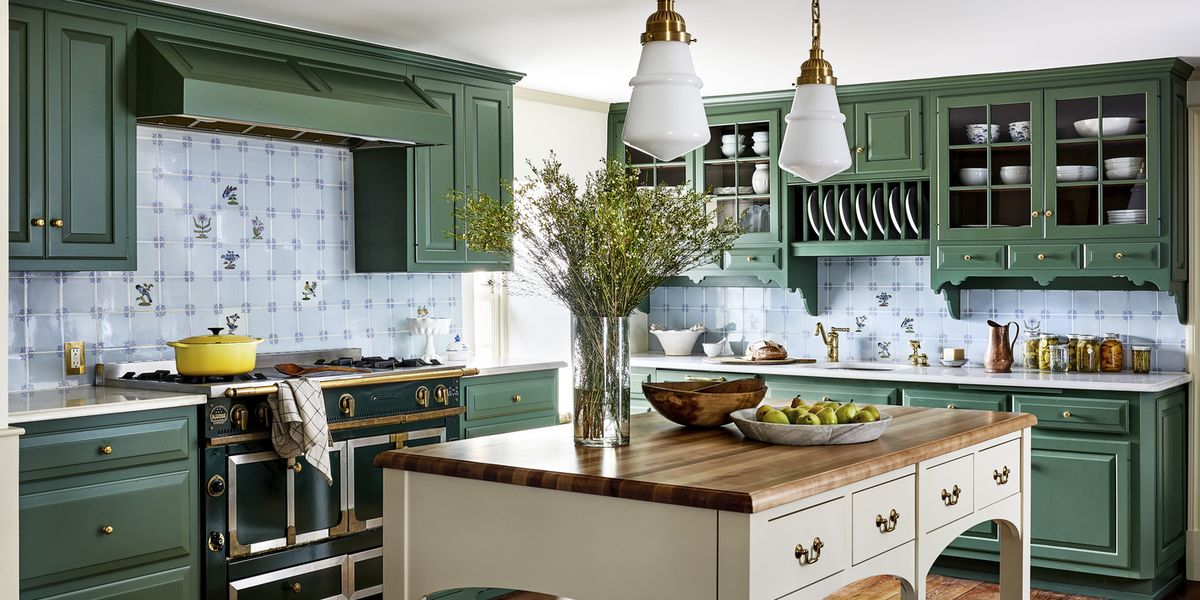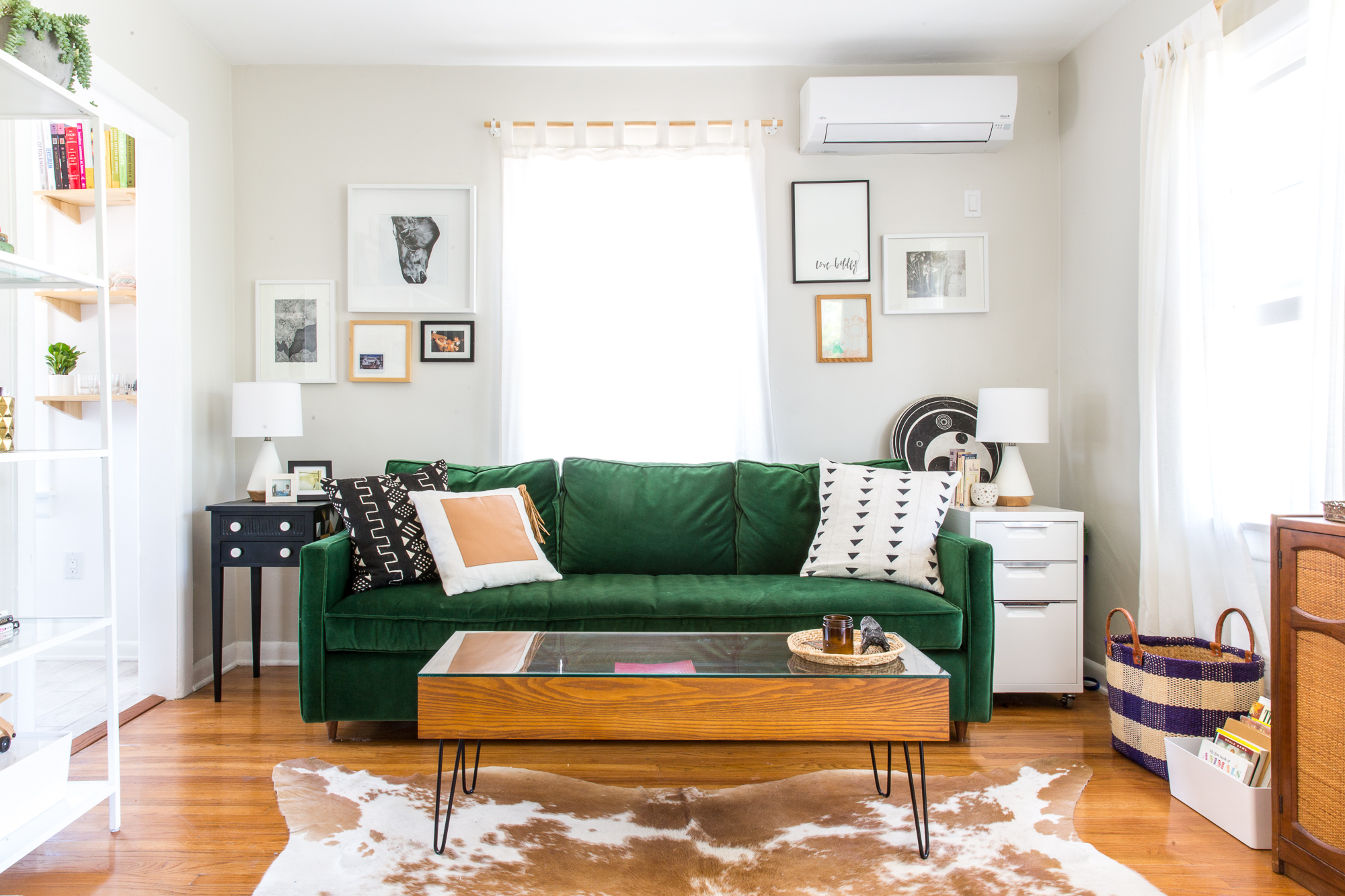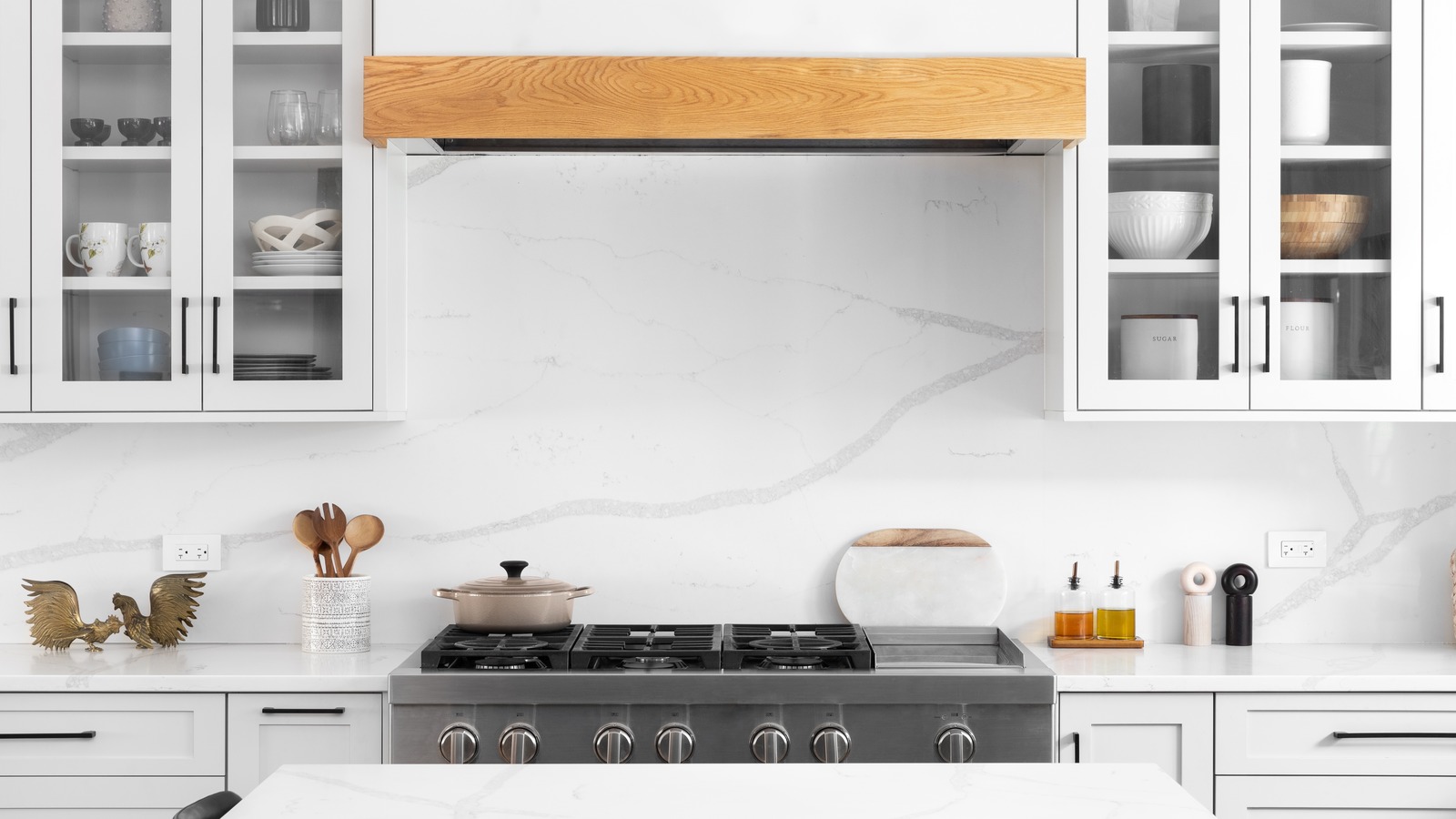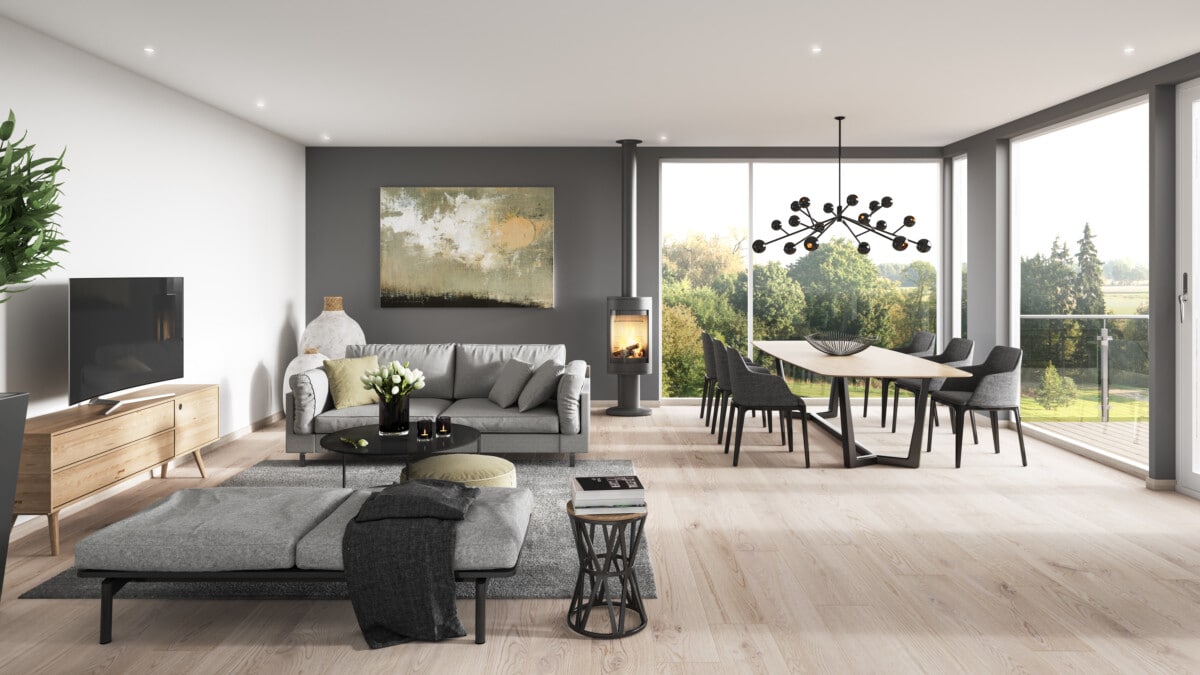Brighten Your Cooking Space with Elegant Sage Green Cabinets and Warm Wood Counters
Is your kitchen ready for a little glow-up—something that feels fresh but not trendy, warm but not rustic, modern yet timeless? If you’re nodding yes, then this might just be the update you’ve been looking for: sage green cabinets paired with warm wood countertops.
This combination is a design lover’s dream—it’s clean, grounded, and effortlessly elegant. Sage green, with its soft, muted tone, adds a calming touch of color without overwhelming the space. It’s gentle on the eyes, easy to decorate around, and brings in that subtle hint of nature we all crave in the heart of our home. Warm wood countertops, whether you choose walnut, oak, butcher block, or cherry, add richness and natural texture that softens modern lines and makes the space feel truly welcoming.
What makes this pairing even more special is its incredible versatility. Whether you’re renovating a sleek city kitchen, refreshing a cozy cottage galley, or building your dream open-concept layoWhat makes this pairing even more special is its incredible versatility and timeless appeal. Whether you’re renovating a sleek urban kitchen, refreshing a cozy country cottage, or designing your dream open-concept layout from the ground up, the combination of sage green and natural wood integrates seamlessly into nearly any interior style. From modern farmhouse and Scandinavian simplicity to vintage charm and refined traditional aesthetics, this duo has a unique ability to bridge contrasts—uniting the old with the new, rustic textures with polished finishes, and earthy tones with understated elegance.

Sage green offers a soft, muted color that feels both calming and fresh. It introduces a subtle layer of color that’s neutral enough to remain timeless but distinctive enough to add character. Meanwhile, natural wood—whether in the form of cabinetry, open shelving, butcher block countertops, or exposed ceiling beams—grounds the space with organic warmth and texture. Together, they create a balanced visual language that feels approachable yet elevated, clean yet cozy.
This combination also plays well with a wide range of complementary materials and finishes. Sage green and wood can be paired effortlessly with brass, matte black, or brushed nickel hardware, as well as stone, tile, or marble surfaces. You can easily adjust the mood of the space depending on the finish—use light oak and soft sage for a breezy, minimalist vibe, or combine walnut with a deeper green for a richer, more dramatic effect. Their adaptability allows them to evolve with changing trends and personal tastes, making them a smart, enduring choice for any kitchen design.ut from scratch, sage green and wood will work with nearly every style. They bridge the gap between old and new, rustic and polished, earthy and elegant.
But why does this color and material duo work so well together? How can you get the balance right in your own space? And what are the little extras—hardware, lighting, layout—that really make this look sing?
So whether you’re planning a full remodel or just looking to make a few meaningful changes, this guide will help you create a kitchen that feels peaceful, personal, and totally Pinterest-worthy. Let’s dive in and bring that vision to life—one cabinet, one counter, one carefully chosen detail at a time.
How to Style a Kitchen with Sage Green Cabinets and Wood Countertops
1. Choose the Right Shade of Sage

Choosing the right shade of sage is essential to setting the mood and style of your kitchen. This versatile, nature-inspired color spans a spectrum—from soft, silvery greens with cool undertones to deeper, more earthy tones with hints of olive. The ideal shade depends on the specific qualities of your space, such as how much natural light it receives, the size of the room, and the atmosphere you want to create. In kitchens with plenty of daylight, cooler, lighter sage tones can enhance brightness and evoke a sense of calm. For cozier or dimly lit spaces, warmer, darker sage hues add richness and a grounded, organic feel that makes the room feel warm and welcoming.
It’s also important to consider how sage green interacts with the other materials and finishes in your kitchen. Pairing a soft sage with white walls, pale wood, or subtle marble creates a light and airy aesthetic that feels fresh and modern. On the other hand, a richer sage green complements dark walnut, brass hardware, or natural stone, delivering a more dramatic and traditional look. To make the best decision, test paint samples in your actual space at different times of the day—lighting can dramatically affect how a color appears.
The right sage tone will act as a flexible foundation for your design, offering a timeless yet modern look that suits a variety of styles, whether you’re aiming for farmhouse charm, minimalist elegance, or rustic sophistication. It brings a quiet depth and natural beauty that transforms your kitchen into a serene and stylish retreat.
2. Pick a Wood Tone That Complements, Not Competes

Selecting a wood tone that complements rather than competes with sage green is key to achieving a balanced and cohesive kitchen design. Sage green is a subtle, earthy color that pairs beautifully with a range of wood finishes, but the trick is to choose a tone that enhances the green without overpowering it. Light woods like oak, ash, birch, or maple work especially well with softer shades of sage, creating an airy, organic feel that emphasizes natural textures and a calming palette. These pairings are ideal for Scandinavian or modern farmhouse styles, where light and space are prioritized.
For a more dramatic or traditional look, deeper wood tones like walnut, cherry, or mahogany can create striking contrast when paired with darker or richer sage hues. This combination introduces a sense of depth and warmth, making the space feel grounded and luxurious. However, it’s important to ensure that the undertones of the wood and the paint don’t clash—warm wood should be paired with a warm sage, while cooler sage tones look best with neutral or cool-toned woods.
Another approach is to blend finishes subtly by incorporating multiple wood tones throughout the space—perhaps using a lighter wood for cabinetry and a slightly darker wood for open shelving or flooring. This layered look adds visual interest while maintaining harmony. The goal is to allow both the sage green and the wood to shine in their own right, supporting one another to create a serene, cohesive environment that feels both fresh and timeless.
3. Don’t Forget Your Hardware

When designing a kitchen with sage green cabinets and wood countertops, hardware might seem like a small detail, but it plays a major role in tying the entire look together. The right knobs, pulls, and hinges can elevate your cabinetry, enhance your chosen color palette, and define the overall style of the space. Because sage green and natural wood are both subtle, earthy elements, your hardware becomes a key opportunity to introduce contrast, texture, or cohesion depending on your desired aesthetic.
For a warm and inviting feel, brass or brushed gold hardware adds a touch of elegance and warmth that complements the soft green tones beautifully. This pairing works especially well in farmhouse, vintage, or transitional kitchens. If you’re aiming for a sleek, modern vibe, matte black or gunmetal finishes offer bold contrast and sharp definition, making the cabinets stand out without overpowering the space. On the other hand, polished chrome or brushed nickel can create a more understated, timeless look that blends seamlessly into the background, letting the sage and wood take center stage.
Don’t forget to consider the shape and style of your hardware—simple bar pulls lend themselves to minimalist or contemporary designs, while bin pulls, knobs, or ornate handles can add character and charm in more traditional settings. Ultimately, hardware is the finishing touch that adds function and flair to your cabinetry, helping your sage green and wood kitchen feel truly complete, cohesive, and thoughtfully designed.
4. Keep the Backsplash Simple

Keeping the backsplash simple is a smart and stylish move when designing a kitchen with sage green cabinets and wood countertops. These two elements already bring a rich combination of color and texture to the space, so a minimalist backsplash helps maintain visual balance and prevents the design from feeling overly busy. Instead of competing for attention, a subtle backsplash supports the overall aesthetic, creating a clean, cohesive backdrop that lets the beauty of sage and natural wood shine through.
A classic choice is white subway tile—timeless, affordable, and endlessly versatile. Its clean lines and neutral color offer just the right amount of texture without distracting from the surrounding elements. If you want a slightly warmer or softer look, consider off-white, cream, or light greige tiles, which harmonize beautifully with warm wood tones and muted greens. For a more natural or rustic vibe, try stone-inspired tiles in finishes like limestone, travertine, or even tumbled marble. These materials offer gentle variation and depth while keeping the color palette grounded and neutral.
You might also consider vertical stacking, herringbone patterns, or handmade-look tiles to add subtle visual interest while staying within a restrained color range. Alternatively, a slab backsplash using quartz, marble, or a stone-look surface can create a sleek, modern feel with minimal grout lines and maximum elegance.
Ultimately, a simple backsplash is not a compromise—it’s a design choice that adds quiet sophistication. It enhances the warmth and tranquility of sage and wood, contributing to a kitchen that feels peaceful, purposeful, and effortlessly refined.
5. Lighting That Elevates the Space
:max_bytes(150000):strip_icc()/Hendley-LivingRooms-5-478fb685eb0942b994095cdccfe98f29.jpg)
Lighting plays a crucial role in elevating a kitchen with sage green cabinets and wood countertops, not only by enhancing functionality but also by shaping the overall ambiance. The right lighting brings out the warmth of the wood, the softness of the sage, and the depth of texture in all your materials. In a space where color and natural elements are already carefully balanced, lighting serves as the finishing layer that ties everything together and highlights the design’s best features.
Start with natural light, if available—maximize windows, consider light-filtering curtains, and keep window areas uncluttered to allow as much daylight in as possible. Natural light works beautifully with sage green, making the color appear fresh and vibrant during the day while revealing the richness of wood finishes.
For artificial lighting, aim for a layered approach. Overhead ambient lighting provides overall brightness, often in the form of recessed lights or a central ceiling fixture. Pendant lights over an island or dining area add focused illumination and a decorative touch. Choose finishes that complement your hardware—brushed brass, matte black, or aged bronze all work well with sage green and wood, adding contrast or cohesion depending on your style. Glass or linen shades can soften the glow, creating a warm, inviting atmosphere.
Under-cabinet lighting is another essential layer. It provides task lighting for countertops while subtly highlighting your cabinetry and backsplash. Use warm white LED strips or puck lights to avoid harsh, clinical tones that could disrupt the cozy, natural palette.
In a kitchen designed around earthy hues and organic textures, lighting should feel intentional and warm—never too harsh or too stark. The right mix of natural and artificial light not only improves functionality but also elevates the mood of the space, making your sage and wood kitchen feel bright, serene, and thoughtfully finished.
Design Variations to Try
Farmhouse Charm

Farmhouse Charm brings a sense of warmth, comfort, and timeless appeal to a kitchen styled with sage green cabinets and wood countertops. This design approach embraces rustic textures, vintage details, and a down-to-earth palette that feels both lived-in and lovingly curated. Sage green fits naturally into the farmhouse aesthetic, offering a soft, nature-inspired hue that feels welcoming and grounded. Paired with wood countertops—especially in rich, warm tones like walnut or distressed oak—the result is a cozy, character-filled space that invites you to slow down and savor everyday moments.
Cabinetry in a shaker style is a staple of farmhouse design, and when painted in sage, it balances traditional craftsmanship with a modern, organic touch. Butcher block or matte-finish wood countertops complement the rustic theme while also adding functional durability. To enhance the look, open shelving made of reclaimed or raw wood can display everyday essentials, antique dishware, or glass jars filled with pantry goods, giving the kitchen a practical yet personal feel.
Farmhouse charm is all about layering details. Apron-front sinks (also known as farmhouse sinks), vintage-style faucets in brass or oil-rubbed bronze, and classic hardware like bin pulls or cup handles add authenticity and texture. Lighting should be warm and welcoming—think wrought iron chandeliers, lantern-style pendants, or glass schoolhouse fixtures that feel both nostalgic and practical.
Natural elements like woven baskets, potted herbs, linen curtains, and handcrafted pottery can serve as simple decorative accents that complete the look without cluttering the space. Altogether, farmhouse charm with sage green and wood feels timeless yet fresh—a perfect balance of beauty and utility, tradition
Modern Minimalist

Modern Minimalist design brings a sleek, streamlined look to the kitchen while still celebrating the natural beauty of sage green cabinets and warm wood countertops. This style is all about simplicity, clean lines, and purposeful design—removing the unnecessary while highlighting what truly matters. When applied to a sage and wood kitchen, it results in a calm, functional space that feels airy, uncluttered, and quietly elegant.
Sage green works beautifully in a minimalist setting because it provides a subtle, muted color that adds depth without overwhelming. Choose a desaturated, cool-toned sage with a matte or satin finish to maintain that soft, refined look. Flat-panel cabinet doors with no visible hardware—or thin, modern pulls in black or brushed metal—reinforce the clean aesthetic. Paired with light to medium wood tones like maple, birch, or white oak, the combination feels grounded yet modern, warm yet restrained.
Countertops in wood bring organic warmth to the space and can be kept sleek with minimal edge profiles. Avoid overly rustic finishes in favor of smooth, polished surfaces that align with the minimalist ethos. Keep the backsplash simple and tonal—white, pale gray, or even a continuation of the countertop material for a seamless look.
Lighting in a modern minimalist kitchen should be intentional and functional. Think slim pendant lights, recessed ceiling lights, or LED strips beneath upper cabinets. Fixtures in matte black, white, or brushed nickel complement the aesthetic without adding visual clutter. Open shelving, if used, should be minimal and styled with restraint—ceramic dishes, clear glass jars, or greenery in small, sculptural planters.
The beauty of modern minimalism lies in its clarity. A kitchen styled this way with sage green and wood becomes a serene, well-organized space that feels contemporary and comforting—perfect for those who value quiet elegance, functionality, and a connection to nature, all within a refined, modern framework.
Cottagecore Cozy

Cottagecore Cozy is a dreamy, nostalgic style that finds its perfect expression in a kitchen with sage green cabinets and warm wood countertops. Rooted in the romanticism of rural life and a love for nature, this aesthetic embraces comfort, softness, and a handcrafted, lived-in feel. Sage green adds the perfect touch of gentle color, evoking the tranquility of garden herbs and misty mornings, while natural wood countertops bring warmth, texture, and an organic grounding to the space.
In a cottagecore-inspired kitchen, cabinetry often features classic details like beadboard panels, glass-front doors, or open shelving—ideal for displaying delicate china, mason jars, and curated collections of vintage finds. Soft sage tones keep the palette muted and soothing, blending effortlessly with natural materials like linen, cotton, ceramic, and wicker. Light wood finishes such as pine or aged oak enhance the cozy, rustic charm, while butcher block countertops offer both utility and storybook appeal.
Details are everything in this style. Floral patterns, embroidered textiles, handmade pottery, and antique kitchen tools serve both aesthetic and functional roles. A lace-edged curtain over a farmhouse sink, a dried herb bundle hanging by the window, or a weathered wooden stool tucked under a counter all contribute to the layered, personal feel of the space. Brass or ceramic knobs, vintage-style faucets, and soft, ambient lighting—like frosted glass pendants or flickering candle sconces—complete the inviting atmosphere.
Cottagecore cozy kitchens aren’t about perfection—they’re about soul. The combination of sage green and wood supports this effortlessly, creating a nurturing, nostalgic environment where baking bread, sipping tea, or arranging wildflowers feels like a gentle ritual. It’s a space where nature and home meet in quiet harmony, offering a daily escape into beauty, comfort, and timeless charm.
Scandinavian Simplicity

Scandinavian Simplicity is a design style rooted in functionality, clean lines, and a sense of calm that feels both modern and timeless. When paired with sage green cabinets and warm wood countertops, this aesthetic comes to life in a way that’s effortlessly elegant and deeply comforting. Sage green, with its soft, muted tone, fits seamlessly into the neutral color palette typical of Scandinavian design, introducing a gentle whisper of color that evokes the natural world without disrupting the visual harmony of the space.
Light wood—such as birch, ash, or white oak—adds warmth and texture, contrasting beautifully with the soft green cabinetry. The use of wood is not just aesthetic but also functional, contributing to the cozy, lived-in feel that Scandinavian spaces are known for. Open shelving made of natural wood, floating storage units, or even wooden ceiling beams can further enrich the space with organic charm, while still maintaining a minimal look.
The emphasis in Scandinavian simplicity is always on clarity and openness. Clutter is minimized through smart storage solutions, and every design element serves a purpose. Hardware tends to be discreet—think matte black knobs or brushed metal handles—keeping the focus on the materials and colors themselves. A neutral backsplash, such as white subway tile or pale stone, enhances the sense of brightness, reflecting light and opening up the space.
Natural light plays a critical role in this style, often amplified by large windows, sheer curtains, and reflective surfaces. When artificial lighting is needed, the Scandinavian approach favors layered light—simple pendant fixtures, under-cabinet LEDs, and warm-toned bulbs that mimic daylight to preserve the soft, serene ambiance.
Incorporating textiles like linen curtains, woven rugs, or minimal cushions in earthy tones can add subtle depth and warmth without disturbing the clean, airy aesthetic. The result is a kitchen that feels fresh and uncluttered, yet deeply welcoming—a sanctuary where simplicity meets intentional design. Scandinavian simplicity with sage green and wood proves that elegance doesn’t need to shout; it whispers in tones of nature, space, and light.
Table of Contents
| Section | Details |
|---|---|
| Title | Brighten Your Cooking Space with Elegant Sage Green Cabinets and Warm Wood Counters |
| How to Style a Kitchen with Sage Green Cabinets and Wood Countertops | |
| 1. Choose the Right Shade of Sage | Soft or muted greens that suit your space and lighting. |
| 2. Pick a Wood Tone That Complements, Not Competes | Balance tones—light sage with warm oak or rich walnut for contrast. |
| 3. Don’t Forget Your Hardware | Consider matte black, brass, or brushed nickel for cohesive styling. |
| 4. Keep the Backsplash Simple | Use neutral or natural textures like white tile or stone to enhance the palette. |
| 5. Lighting That Elevates the Space | Layer natural and statement lighting to bring warmth and depth. |
Design Variations to Try
| Style | Description |
|---|---|
| Farmhouse Charm | Sage shaker cabinets, butcher block counters, apron sink, and vintage accents. |
| Modern Minimalist | Sleek flat-panel cabinets, light wood, minimal hardware, and clean lines. |
| Cottagecore Cozy | Soft sage tones, rustic wood, floral textiles, and charming open shelving. |
| Scandinavian Simplicity | Muted greens, pale woods, natural light, and functional, airy layouts. |
Frequently Asked Questions
What wall colors go well with sage green cabinets?
- Warm white (like ivory or cream) keeps things light and timeless.
- Soft greige adds sophistication and warmth.
- Pale blush or peach adds a subtle, unexpected contrast.
Are wood countertops high maintenance?
Not necessarily. With proper sealing and regular oiling (especially for butcher block), they can last for decades. Just avoid standing water and always use cutting boards.
Can I mix metals with this color scheme?
Absolutely! Try combining brushed brass with matte black or nickel—just make sure to repeat each finish at least twice so it looks intentional.
What flooring works best with sage and wood?
- Light hardwood floors for a soft, seamless flow.
- Patterned tiles for a vintage or European feel.
- Concrete-look tiles for a modern-industrial touch.
Will sage green go out of style?
It’s considered a classic neutral now, especially when paired with natural materials like wood, stone, and linen. It’s versatile and easy to update with new accessories over time.
Conclusion: A Timeless Pairing That Brings Peace and Style
There’s just something about sage green cabinets and warm wood countertops that feels right. It’s not flashy, but it’s deeply beautiful—a kitchen that invites you to stay a little longer, pour a second cup of coffee, and cook with calm.
Whether you lean rustic, modern, or somewhere in between, this pairing has the flexibility and elegance to fit your vibe perfectly. Soft, grounded, and full of heart—what more could you ask for in a kitchen?
